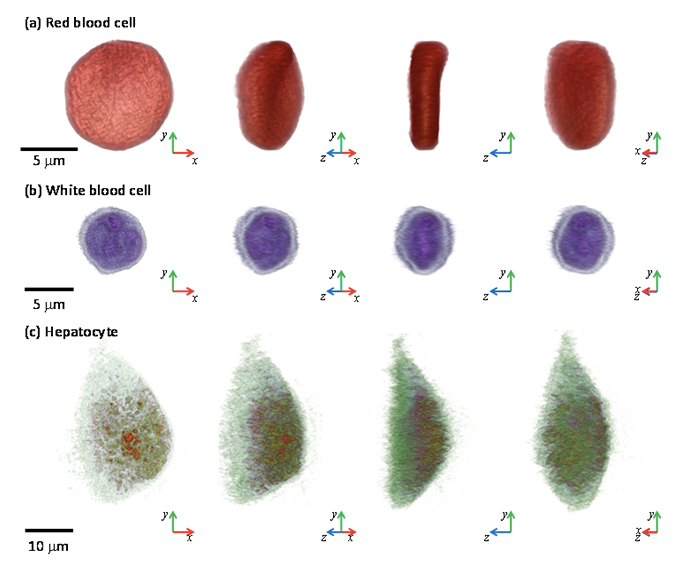Professor YongKeun (Paul) Park of Korea Advanced Institute of Science and Technology (KAIST) Institute of Health Science and Technology and his research team brought to the market a revolutionary bio-medical device known as the holotomography (HT) through TomoCube, a Korean start-up the professor co-founded with CEO Kihyun Hong. Professor Park has been a leading researcher in the field of biophotonics since his days at MIT and has dedicated much of his research career to working on digital holographic technology. He and his research team have been trying to develop and hone a powerful yet cost-effective method for active illumination using a digital micromirror device (DMD) for quantitative phase-imaging.
After establishing TomoCube in 2015, Professor Park joined forces with TomoCube’s R&D team to launch their first product: a state-of-the-art 2D/3D/4D holographic microscope that would allow for real-time, quantitative, label-free, and live cell imaging, which is also compatible with conventional cell culture environments. From the beginning, this commercialization from the laboratory has been supported by KAIST’s Startup Institute.
Current fluorescence confocal microscopy techniques require the use of exogenous labeling agents to render high-contrast molecular information; therefore, drawbacks include possible photo-bleaching, photo-toxicity, and interference with normal molecular activities. However, the HT, which is based on optical diffraction tomography (ODT), enables users to quantitatively and non-invasively investigate the intrinsic properties of biological cells. In brief, ODT reconstructs the 3D distribution of the refractive index (RI) by solving the inverse scattering problem, which is similar to X-ray computed tomography. From the measurement of multiple 2D holograms of a cell, coupled with various angles of plane wave illuminations, 3D RI distribution of the cell can be reconstructed as can ben seen in the figure below. The reconstructed 3D RI map provides structural and chemical information of the cell including dry mass, morphology, protein concentration, and dynamics of the cellular membrane. The team at TomoCube sees numerous applications of the HT. Some of the team’s research breakthroughs that have leveraged ODT’s unique and special capabilities can be found in several recent publications including a cover article in Optica 2(4), 343-346 (2015).
The HT is one of only two tomographic microscopes of its kind available in the world today, and TomoCube’s model is the best in class in terms of specifications and functionality. Furthermore, HT users are able to calibrate automatically and self-adjust with ease. With users able to see 3D/4D live images of cells, without fixing, coating or staining cells, and sample preparation times cut down from a few days or hours to just a few minutes, many researchers are eager to become early adopters of this revolutionary, high resolution, tomographic microscope.
Early adopters will also get to preview TomoCube’s patented software called TomoView. Whereas similar software tools on the market only show images, TomoView provides users with time-lapsed 4D video images over a period of 72 hours and excels in its 3D/4D visualization performance. It is able to generate parameters for volume, surface area, dry mass, and fluctuation, which can then be used for morphological, chemical, and mechanical analysis.

With a successful product preview at the Society of Photographic Instrumentation Engineers (SPIE) 2016 Photonics West Exhibition in San Francisco under their belts, and another preview showing in the United States and Canadian Academy of Pathology (USCAP) in Seattle scheduled, TomoCube is preparing to begin shipping their product as early as May.
According to Professor Park, “the HT provides unique advantages in cell imaging. It enables label-free and quantitative 3-D imaging capability, which will find direct applications in various applications in biology and medicine.”
For more information on this exciting new company and technology, please visit their website at www.tomocube.com. For further inquiries regarding specifications or pre-orders, the team can be contacted at info@tomocube.com.







